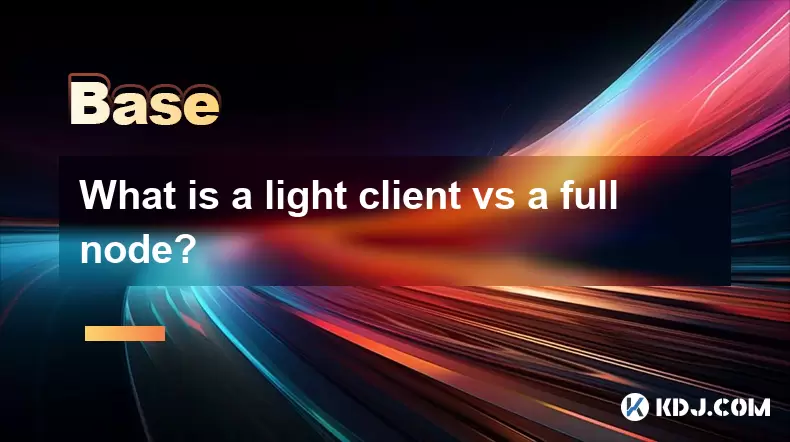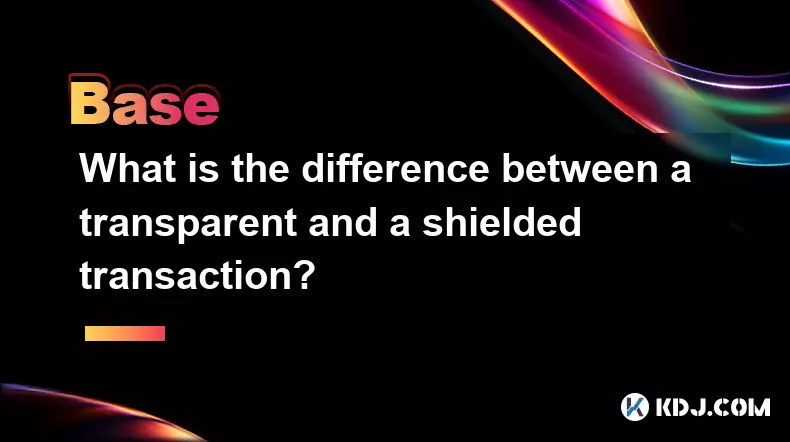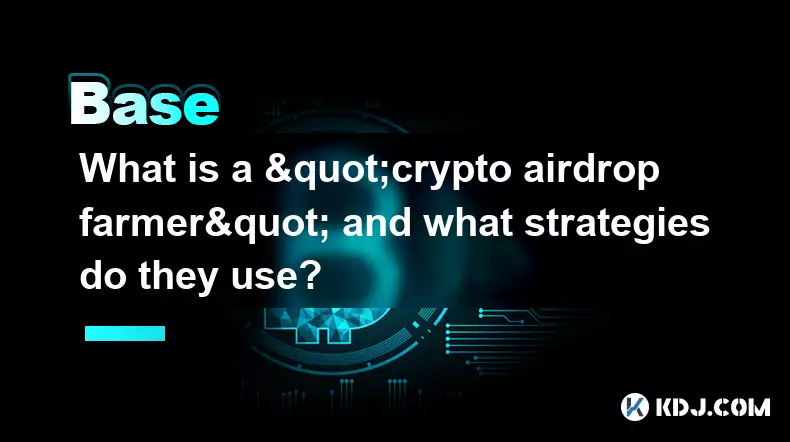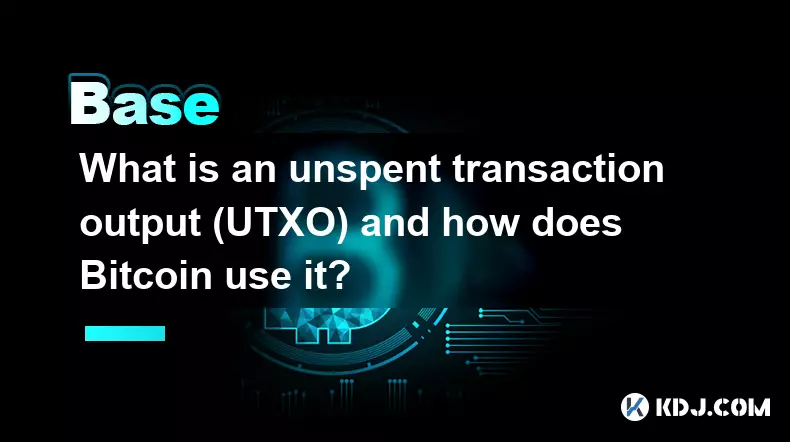-
 bitcoin
bitcoin $99097.524802 USD
-3.18% -
 ethereum
ethereum $3190.458287 USD
-7.51% -
 tether
tether $0.999648 USD
-0.03% -
 xrp
xrp $2.309178 USD
-4.17% -
 bnb
bnb $921.186688 USD
-3.96% -
 solana
solana $144.106489 USD
-6.12% -
 usd-coin
usd-coin $0.999837 USD
-0.02% -
 tron
tron $0.291415 USD
-1.32% -
 dogecoin
dogecoin $0.163935 USD
-4.54% -
 cardano
cardano $0.526269 USD
-4.77% -
 hyperliquid
hyperliquid $37.814277 USD
-2.92% -
 bitcoin-cash
bitcoin-cash $509.826264 USD
-1.40% -
 chainlink
chainlink $14.448349 USD
-5.83% -
 stellar
stellar $0.267630 USD
-4.87% -
 unus-sed-leo
unus-sed-leo $9.178879 USD
0.52%
什麼是輕度客戶端與完整節點?
A full node validates all transactions independently, ensuring security and decentralization, while light clients rely on full nodes for faster, resource-efficient access to the blockchain.
2025/07/09 11:57

了解完整節點的概念
完整節點是一個程序,可完全驗證區塊鏈上的交易和區塊。它下載了區塊鏈分類帳的完整副本,並獨立驗證每筆交易而不依賴任何第三方。這樣可以確保遵循加密貨幣協議的所有規則。
運行一個完整的節點需要大量的存儲空間,帶寬和處理能力,尤其是對於Bitcoin或以太坊等大型區塊鏈。該節點存儲整個事務歷史記錄,執行共識規則,並將有效的事務傳遞到網絡中的其他節點。
通過維護區塊鏈的完整副本,一個完整的節點有助於權力下放和安全性。它通過對自己經過驗證的歷史進行交易來防止欺詐活動。任何不存在或違反協議規則的硬幣的嘗試都將被完整的節點拒絕。
是什麼定義了輕度客戶?
輕型客戶端,也稱為輕量化錢包或簡化的付款驗證(SPV)客戶端,不會下載整個區塊鏈。相反,它僅下載塊標頭,並依靠完整的節點在需要時提供相關的交易數據。
這種方法大大減少了存儲和處理的數據量,使輕度客戶端非常適合具有有限資源(例如智能手機或筆記本電腦)的設備。光線客戶假設大多數完整節點都是誠實的,並且遵循他們支持的最長有效鏈。
與完整的節點相比,輕型客戶端更快,更容易維護。但是,他們提供的安全性較小,因為他們沒有獨立驗證所有交易。用戶必須相信為他們提供數據提供的完整節點不會勾結以提供虛假信息。
完整的節點和光客戶如何處理交易驗證?
在完整節點的情況下,從創世記塊開始驗證每個交易。這包括檢查數字簽名,確保未發生雙重支出,並確認遵守諸如塊大小限制和難度調整之類的共識規則。
對於輕型客戶,交易驗證的工作方式不同。它使用完整節點提供的默克爾證明來確認在給定塊中是否存在特定交易。光線客戶端不會處理整個塊,而是檢查交易是否包含在塊標頭中的默克爾樹根中。
這種方法使光客戶端可以有效地運行,但對他們查詢的完整節點介紹了一定程度的信任。如果光客戶客戶連接到惡意節點,則可能會收到不正確的信息,這可能導致潛在的漏洞。
資源需求和網絡參與
操作完整的節點需要大量的硬件和帶寬。例如,運行Bitcoin完整節點當前需要數百GB的存儲,一致的Internet連接性以及足夠的RAM來處理驗證過程。這些要求對於臨時用戶可能會過時。
相反,輕度客戶會消耗最小的磁盤空間(通常只有幾兆字節),並且幾乎不需要帶寬。它與多個完整節點進行通信以獲取必要的數據,從而使用戶可以在不維護完整分類帳的情況下快速與區塊鏈交互。
儘管有差異,但完整的節點和光客戶都在網絡中扮演著重要的角色。完整的節點執行規則並保護系統,而光線客戶通過降低進入障礙來增加可訪問性和用戶的採用。
使用每種類型的安全含義
完整節點提供的安全性明顯高於光線客戶端的安全性。由於完整的節點本身可以驗證所有內容,因此它們不受許多針對輕質客戶的攻擊。除非攻擊者控製網絡的哈希功率超過51%,否則他們不能被欺騙接受無效的交易。
另一方面,由於依賴外部來源,光線客戶面臨幾種風險。如果所有連接的完整節點都受到妥協或不誠實,則輕度客戶可能會接受欺詐性數據。儘管這種情況在良好的網絡中不太可能,但它仍然是新的或較小的區塊鏈的關注點。
為了減輕這些風險,光線客戶通常會同時連接到多個完整節點並比較響應。這種冗餘有助於確保准確性,儘管它仍然沒有完整節點執行的獨立驗證。
用例和實際應用
需要高度安全性和自主權的企業和開發人員通常會運行完整的節點。例如,交易所使用完整的節點來驗證存款和提款,而無需取決於第三方服務。開發人員還依靠完整的節點來在受信任的環境中測試智能合同和應用。
優先考慮便利性和機動性的個人用戶通常更喜歡輕型客戶。例如,移動錢包通常是作為輕客戶端構建的,以確保快速同步和資源消耗較低。這些錢包允許用戶在不管理完整節點的複雜性的情況下輕鬆發送和接收資金。
專注於權力下放和抵抗審查的組織通常會鼓勵完整節點的運作。相比之下,旨在進行大規模收養的項目可能會有利於輕型客戶減少新用戶的技術障礙。
常見問題
問:輕度客戶端可以成為一個完整的節點嗎?是的,輕度客戶端可以通過下載整個區塊鏈並開始獨立交易驗證來過渡到完整節點。此過程通常涉及更改錢包軟件中的設置或切換到支持完整節點功能的其他錢包。
問:輕度客戶端比完整的節點慢?未必。最初,輕度客戶通常更快地同步,因為他們下載了較少的數據。但是,在查詢完整節點的特定交易詳細信息時,尤其是在高峰網絡使用過程中,他們可能會遇到延遲。
問:是否可以同時運行完整的節點和輕度客戶端?是的,用戶可以在同一設備上或在不同設備上操作。在本地運行一個完整的節點,同時遠程使用Light Client可以根據用例,可以提高靈活性和安全性。
問:光線客戶是否有助於網絡權力下放?儘管Light客戶端沒有驗證交易本身,但它們仍然可以通過網絡傳播信息。他們的存在增加了整體參與,通過擴大用戶群間接支持分散化。
免責聲明:info@kdj.com
所提供的資訊並非交易建議。 kDJ.com對任何基於本文提供的資訊進行的投資不承擔任何責任。加密貨幣波動性較大,建議您充分研究後謹慎投資!
如果您認為本網站使用的內容侵犯了您的版權,請立即聯絡我們(info@kdj.com),我們將及時刪除。
- 加密貨幣大屠殺:在狂野的市場中應對拋售和清算
- 2025-11-14 16:50:01
- 穆罕默德·西拉傑 (Mohammed Siraj) 的第一個法術困境:一位印度隊友的批評
- 2025-11-14 14:40:02
- BTC、ETH 和山寨幣精選:探索加密貨幣格局
- 2025-11-14 14:50:01
- 拋硬幣故事:Temba Bavuma 的賭注以及印度與南非的對決
- 2025-11-14 12:50:01
- 舒布曼·吉爾 (Shubman Gill)、WTC 決賽和拋硬幣:紐約人的看法
- 2025-11-14 15:05:01
- Aerodrome 起飛:統一跨鏈以太坊 DeFi 流動性
- 2025-11-14 15:10:02
相關知識

透明交易和屏蔽交易有什麼區別?
2025-11-10 17:59:40
了解加密貨幣中的透明交易1. 透明交易是大多數公共區塊鏈(如Bitcoin和以太坊)上的標準交易形式。每個細節,包括發送者地址、接收者地址和交易金額,對訪問區塊鏈賬本的任何人都是可見的。 2. 這些交易依賴於假名而非真正的匿名。雖然用戶身份沒有明確地與地址綁定,但行為模式和外部數據通常可用於使參與者...

什麼是“加密空投農民”以及他們使用什麼策略?
2025-11-09 15:39:43
什麼是加密貨幣空投農民? 1. 加密貨幣空投農民是指積極參與區塊鏈項目以獲得免費代幣分配(稱為空投)的個人。這些參與者經常使用去中心化應用程序 (dApp)、創建錢包、鑄造 NFT 或執行特定的鏈上交易,以增加被選中的機會。 2. 空投挖礦已發展成為加密貨幣領域的半專業活動。這些農民不是被動持有資產...

什麼是未花費的交易輸出(UTXO)以及Bitcoin如何使用它?
2025-11-12 01:40:17
了解未花費交易輸出(UTXO)的概念1. 未花費的交易輸出,通常稱為 UTXO,是 Bitcoin 如何記錄所有權和驗證交易的基本組成部分。每個 UTXO 代表已發送到特定地址但尚未花費的離散數量的 bitcoin。這些產出充當新交易的構建塊,其功能類似於傳統金融中的實物硬幣或票據。 2. 用戶發送...

什麼是“治理攻擊”以及 DAO 如何受到損害?
2025-11-14 05:59:35
了解去中心化自治組織中的治理攻擊1. 當個人或團體對 DAO 的決策過程獲得不成比例的影響力時,就會發生治理攻擊,使他們能夠操縱提案、投票或財政分配以利於自己。這些攻擊利用了旨在確保權力下放和社區控制的機制。 2. 在許多 DAO 中,投票權與代幣所有權直接相關。當單個實體積累了大量治理代幣時,他們...

如何跨多個錢包和鏈跟踪加密貨幣投資組合?
2025-11-12 16:19:42
加密生態系統中去中心化交易所的演變1. 去中心化交易所(DEX)通過消除中介機構並通過智能合約實現點對點交易,改變了用戶交易數字資產的方式。與中心化平台不同,DEX 在以太坊、幣安智能鍊和 Solana 等區塊鍊網絡上運行,讓用戶完全控制自己的資金。 2. Uniswap 和 SushiSwap 等...

加密保險協議如何運作?
2025-11-08 00:39:48
了解加密保險協議1. 加密保險協議的運作方式是針對因持有數字資產而造成的損失提供財務保護。這些損失可能源於黑客攻擊、智能合約故障或交易所破產。用戶用加密貨幣支付保費來參與通過去中心化治理管理的保險池。 2. 這些協議通常構建在以太坊或 Polygon 等區塊鍊網絡上,利用智能合約自動進行索賠驗證和支...

透明交易和屏蔽交易有什麼區別?
2025-11-10 17:59:40
了解加密貨幣中的透明交易1. 透明交易是大多數公共區塊鏈(如Bitcoin和以太坊)上的標準交易形式。每個細節,包括發送者地址、接收者地址和交易金額,對訪問區塊鏈賬本的任何人都是可見的。 2. 這些交易依賴於假名而非真正的匿名。雖然用戶身份沒有明確地與地址綁定,但行為模式和外部數據通常可用於使參與者...

什麼是“加密空投農民”以及他們使用什麼策略?
2025-11-09 15:39:43
什麼是加密貨幣空投農民? 1. 加密貨幣空投農民是指積極參與區塊鏈項目以獲得免費代幣分配(稱為空投)的個人。這些參與者經常使用去中心化應用程序 (dApp)、創建錢包、鑄造 NFT 或執行特定的鏈上交易,以增加被選中的機會。 2. 空投挖礦已發展成為加密貨幣領域的半專業活動。這些農民不是被動持有資產...

什麼是未花費的交易輸出(UTXO)以及Bitcoin如何使用它?
2025-11-12 01:40:17
了解未花費交易輸出(UTXO)的概念1. 未花費的交易輸出,通常稱為 UTXO,是 Bitcoin 如何記錄所有權和驗證交易的基本組成部分。每個 UTXO 代表已發送到特定地址但尚未花費的離散數量的 bitcoin。這些產出充當新交易的構建塊,其功能類似於傳統金融中的實物硬幣或票據。 2. 用戶發送...

什麼是“治理攻擊”以及 DAO 如何受到損害?
2025-11-14 05:59:35
了解去中心化自治組織中的治理攻擊1. 當個人或團體對 DAO 的決策過程獲得不成比例的影響力時,就會發生治理攻擊,使他們能夠操縱提案、投票或財政分配以利於自己。這些攻擊利用了旨在確保權力下放和社區控制的機制。 2. 在許多 DAO 中,投票權與代幣所有權直接相關。當單個實體積累了大量治理代幣時,他們...

如何跨多個錢包和鏈跟踪加密貨幣投資組合?
2025-11-12 16:19:42
加密生態系統中去中心化交易所的演變1. 去中心化交易所(DEX)通過消除中介機構並通過智能合約實現點對點交易,改變了用戶交易數字資產的方式。與中心化平台不同,DEX 在以太坊、幣安智能鍊和 Solana 等區塊鍊網絡上運行,讓用戶完全控制自己的資金。 2. Uniswap 和 SushiSwap 等...

加密保險協議如何運作?
2025-11-08 00:39:48
了解加密保險協議1. 加密保險協議的運作方式是針對因持有數字資產而造成的損失提供財務保護。這些損失可能源於黑客攻擊、智能合約故障或交易所破產。用戶用加密貨幣支付保費來參與通過去中心化治理管理的保險池。 2. 這些協議通常構建在以太坊或 Polygon 等區塊鍊網絡上,利用智能合約自動進行索賠驗證和支...
看所有文章










































































